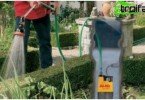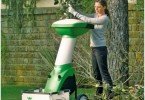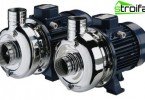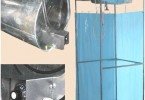Cultivating land in a summer cottage is laborious and annually puts forward a number of tasks for the owners of the plot, which can be difficult to cope with. Trying to resolve issues from year to year manually is tedious. Therefore, the goal of buying a cultivator for a summer residence arises quite often. How to make the right choice of the right technique, what considerations should be followed when purchasing it – a problem that we will try to cover here in the most detail.
Content
- Fundamentals of classification of cultivating aggregates
- How to choose a cultivator – general settings
- Manual models of cultivators
- Types of cultivators and reviews about them
- What cultivating tips will be useful
Any conversation about agricultural machinery for a personal area begins with the classification of the subject of discussion. We, too, cannot do without a description of the principles of systematic cultivation of the earth devices. After all, their number on the market has long been measured in three-digit numbers – dealing with such “wealth” is really difficult. Much depends on what range of work we consider the most significant for maintaining our “lands” in a satisfactory condition..
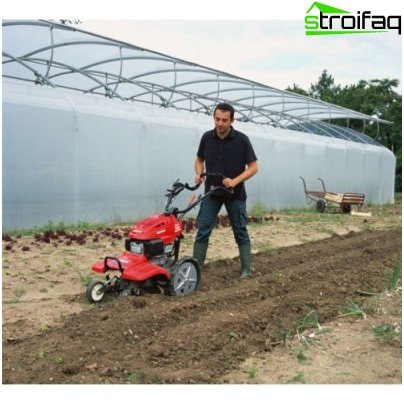
The cultivator for summer cottages is selected in accordance with the size of the plot and the goals of cultivating the land
Fundamentals of classification of cultivating aggregates
Dividing the devices of interest to us into types, types and subspecies, we are forced to take into account the topography of the cultivated land, the size of our “possessions”, the set of available crops, soil features and the main goals for which we were going to buy equipment. Plus own financial opportunities – as without it?
According to the intended purpose:
- machines and devices designed for continuous processing of the soil layer (with associated harrowing);
- for plowing aisles (if necessary – together with a special “top dressing” of a fertile level);
- for pre-sowing works (with loosening, crumbling, leveling the soil and removing weeds);
- universal (providing for the implementation of the cultivation of all directions).
By the number of rows covered:
- single row;
- multirow.
By weight:
- lungs – for small areas;
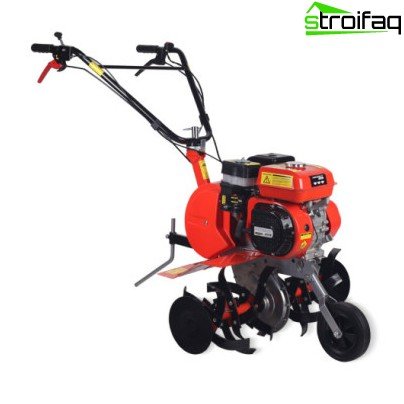
A lightweight unit is convenient in a greenhouse and in a small area, but insufficient for a large farm
- medium – for complex (clay) soils;
- heavy – with a powerful engine and the ability to use additional equipment.
According to the optimality of the ratio of parameters “reliability-functionality-price”:
- amateur (simple, with a short service life);
- semi-professional (more complex in design, able to last longer);
- professional (in most cases not cheap, powerful, with a whole “bunch” of functions, long-term).
According to the principle of action:
- tame
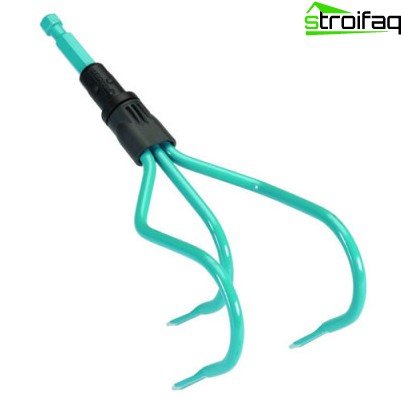
Hand cultivator is indispensable on remote and inaccessible lands
- electric
- rechargeable
- gasoline
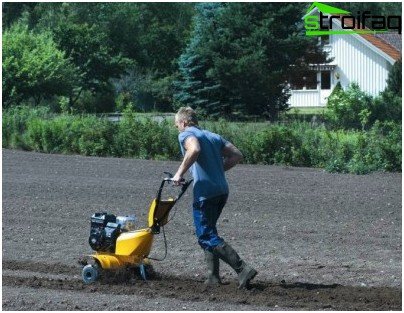
Medium power petrol cultivators respected by experienced summer residents
How to choose a cultivator – general settings
It is desirable to mechanize country work to the maximum – there is no arguing with this. But it’s hardly worth giving up on hand-held devices: there is always a place where the wheeled “helper” will not pass: a discount, an alpine hill, a line along the fence, an intricate flower garden. It is clear that flowers and perennial plants are located there, but this “rug” must be periodically “slowed down”, freeing the roots for penetration into the depths of oxygen. Technology cannot turn around here, and flower-bushes are fragile cultures: the risk of damaging them is great. You can’t imagine anything more convenient than a small brisk special tool for operations with them.
Manual models of cultivators
- Rotary cultivator (star)
A shaft with asterisks is involved in the work – it cuts the earth layers. The cutting mechanism itself is mounted on a stick-stick, which is selected for the growth of a gardener-florist. Clinging to the petals of stars, weeds “together” fly out of their native environment. It’s also convenient to move ridges of grown cucumbers with such an instrument – as well as to spud potatoes, especially varietal, planted here and there. A flowerbed in the shade of a coniferous tree with an omnipresent instrument also does not interfere with walking. True, such a light toolkit cannot be overcome with a heavy downed crust or clay section – you will need a trolley-unit.
- Cultivator-ripper (type “tornado”)
This “invention” outwardly resembles a pitchfork with hooked teeth sharp on the tips. There can be three or five such “gnawing” soil hooks. Swinging, a man with force lowers the loosening device to the surface. The teeth are deeply immersed in the soil – all that remains is to pull the entire “thing” by the hilt toward you. If at this moment it is also slightly “cranked”, it will work like a corkscrew. A tool with a long handle is used in the garden, with a short handle-handle – for processing boxes with seedlings or flower pots in greenhouses.
Types of cultivators and reviews about them
Motocultivators are a large group of wheel mechanisms driven by connecting to the mains, using battery charging and, finally, an engine running on a specific fuel. The most common division of cultivators into electric and gasoline. In general, in terms of power and “weight category” such equipment is divided into light, medium and heavy equipment. Each of these categories has its pros and cons, so it’s very problematic to single out the best car in this set.
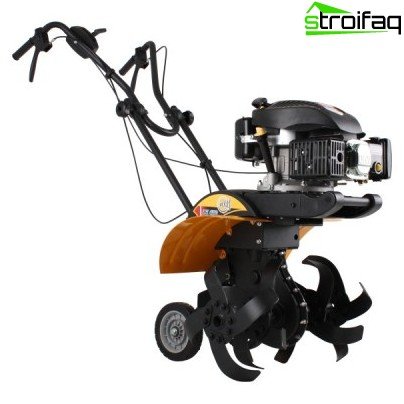
Demanded brands of semi-professional models cost a lot, but pay off quickly
- Ultralight and lightweight units
Most of the representatives of this group of mini-agricultural machines are 1.5-3 hp. work on electricity. There is no complex motor in them, which gives the device greater maneuverability (within the length of the cord, of course). The ease of managing such cultivators is a huge advantage of the mentioned line of cultivation tools. Super lightweight “baby cars” weigh from 9 to 15 kg – any woman, teenager or person of age will be able to transfer a “plowing friend” to a distant edge of the site. Ease of management is another positive quality. There is also inconvenience: the wire gets tangled underfoot, trying to get “under the knife”.
The “light” brother weighs up to 30 kilos, its power does not exceed the line of 4.5 “horses”. The position “on a leash” (a cord longer than 10 m – a rarity) and the inability to loosen the soil deeply (up to 10 cm for super-light, not more than 20 – for light) makes this detachment of agricultural products suitable for use only on an area of 5-10 hundred parts. Some members of the “lightweight” stage allow the transition to the battery, which is available in the complete set. But it is not designed for long-term work – reloading will be needed quickly. On virgin lands, such ripper-diggers have nothing to do: they are “launched” to cultivate previously plowed zones.
For the greenhouse-greenhouse economy, the ultralight and lightweight electric cultivator is certainly convenient. Open “possessions” of 10 “with a hook” (up to 15) acres need the presence of at least a mechanism with a gasoline engine (milling, two-stroke). Even if relatively light and not designed for long-term operation. Such a “robocop” is economical, does not belong to too noisy, can be delivered in the trunk of a car. However, the scope of its use beyond inter-row cultivation or light plowing of greenhouse beds (plus loosening near trees) does not extend. A solid arable land will require the participation of light heavyweight technical equipment – from an average “line”.
- Midweights
A relatively small motor cultivator weighing 35-50 kilograms is a typical representative of this category of auxiliary agricultural implements. Their power is from 4 to 6 hp. These are semi-professional gasoline models with a wide grip of the cutter (within 40-85 cm), digging the surface at 20-30 cm depth. They are stable, do not make “jumps” on sharp dense ledges. They cope well with clay soils, behave “calmly” on continuous, knocked down soil. But not all virgin lands will submit to such an aggregate. Its mechanism is somewhat simple for complex layers: the danger of irrevocably breaking important parts is too great.
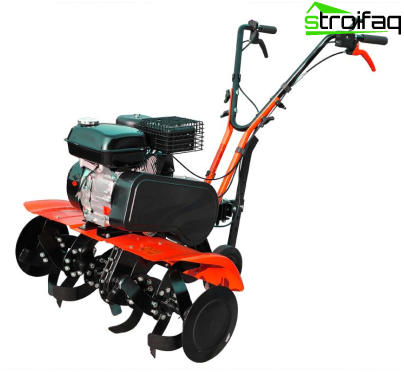
“Srednetyazh” will cope with a plot of up to 325-30 acres – the question is about the price and a set of nozzles
Nevertheless, it is the described category that makes it possible to cope with the processing of a plot of 15-25 acres without great difficulties. He will smash the earth well – both in autumn and spring. The large dimensions make it extremely awkward for operations on narrow beds, but under the potato-carrot-beet, such a “hero” will lay excellent rows – wide, long. He does a great job of digging up tightly crusted circumferential circles in a garden that was hardly ever processed. The powerful root system of wheatgrass with sow thistle is easily destroyed by such a “hard worker” – any garden will take a very well-groomed appearance with its help. If the distance between the trees allows such a “handsome man” to fit into the U-turns.
- Heavy family: professionals
The weight of the heavy cultivator machine is 55-70 kg, their power exceeds 5.5 hp The width of the captured strip is up to 1 m. This category provides a whole range of functions. The gearbox is reinforced, the frame is in stock. So the ability to work with various types of attachments is present. Performance also depends on engine performance. There is a gearbox – it allows you to choose the speed, power, characteristics of the type of cultivation events. Soil features, land area – all this does not matter for such a universal technique. Professional cultivator manages a trailer.
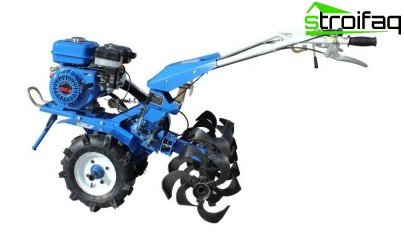
Most heavy units qualify as professional-grade equipment
Since giant specimens are rarely in demand in a summer house, as they are focused on farmers’ fields, most owners of garden plots consider the best cultivator to be on the “weight average” list. However, the priorities in the search and purchase of equipment for the cultivation of “hacienda” are dictated, as noted, by a combination of circumstances. The mass of suburban residents agreed that it is advisable to buy at least two varieties of cultivating devices-mechanisms: a manual and a wheeled unit. This is also evidenced by the reviews of those who have already dealt with technology ennobled the earth’s firmament. Good brands include Texas, Solo, Ruberi – in specific versions that are relevant to you.
What cultivating tips will be useful
Each equipment sample is accompanied by a set of nozzles oriented to a specific “processing” function. Some of them are already provided in the most basic set, others can be offered as “useful” additions. You make the choice, because you have knowledge of all the details of the “land-crop” plan. The smaller, more compact the acquired design, the more modest the number of operations it performs.
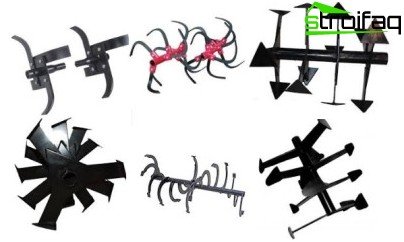
Different cutters are designed for various agricultural operations: this should be taken into account in the search.
The most popular nozzles: hiller, plane cutter, plow. A potato digger can only appear as a part for heavy equipment, as it sinks to a considerable depth. A plow + aerator for a lawn – things are also quite necessary. A rotary mower and shredder dissecting garden debris into fragments is highly desirable. Well, if for all of the above you can use a snow shovel, consider that you already have the optimal set of manipulations – the rest is secondary. Good luck choosing!


